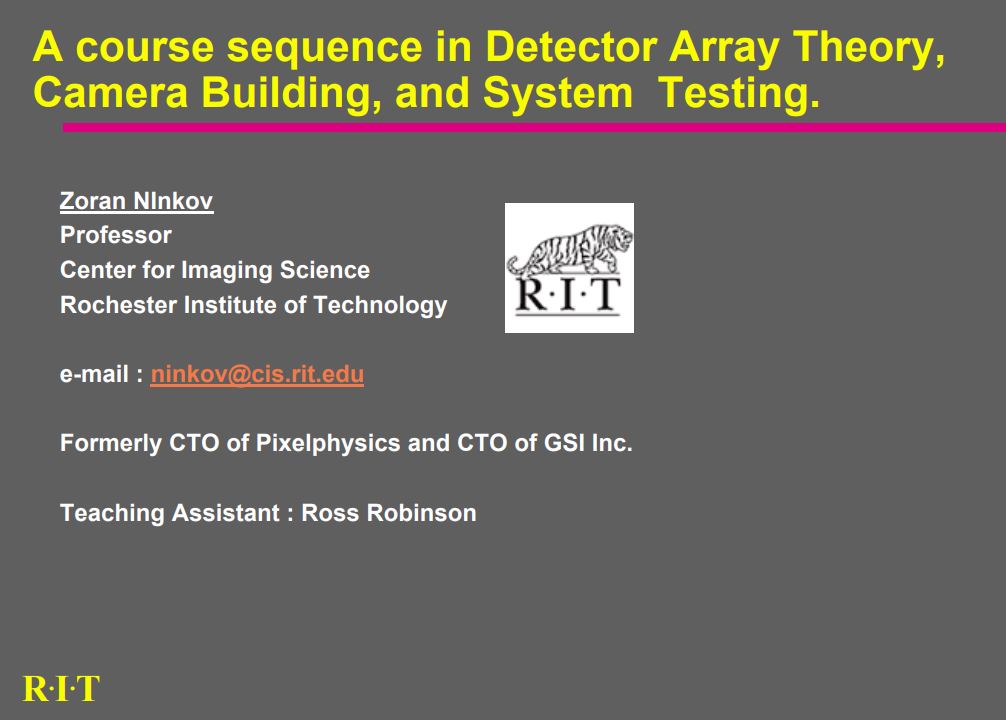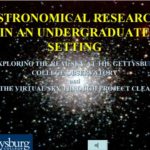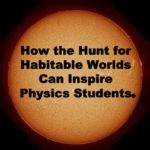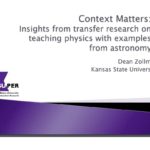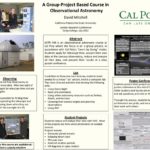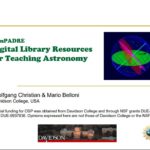Here are responses to my request that you each search out a biography of the particular emigre assigned to you and write a paragraph or two about him or her.
The notable features of these bios are
… the emigres are mostly Jewish — not surprising because they were fleeing Nazi persecution;
… they are very well educated and are active and creative members of their professions and go on to make major contributions to America after the war— they are mostly physicists chosen by me because they contributed so much to the American Bomb project;
… they are in many ways supported by fellow physicists — illustrating once again the world-wide mutual acquaintance and sense of community among the physicists;
… the Rockefeller Foundation played an important role in building this community and in helping to rescue scholars of many kinds from Nazi Germany.
Barbara Denny on Otto Stern
Otto Stern (born Sohrau, Upper Silesia, Germany/now Zory, Poland 1888; died Berkeley, California 1969) was the oldest child of a prosperous Jewish family of grain merchants and flour millers. In 1892, his family moved to Breslau (now Wroclaw Poland ). In his schooling, his family followed the pre-World War I German tradition of letting children explore various subjects without a particular professional goal in mind. He attended several universities: Freiburg im Breisgau, Munich, and Breslau. In his advanced studies, he also attended lectures in both theoretical and experimental physics but chose physical chemistry for his doctorate because two professors in Breslau’s chemistry department were more aligned with his interests in thermodynamics and molecular theory than the physics professors. In 1912 he obtained his doctorate. Immediately after graduating, he went to the University of Prague as a Postdoctoral Associate because Einstein was there and he followed Einstein when he moved to ETH Zurich in 1913. (He was fortunate to be able to select a place of work without regard to the availability of a remunerative position, and his association with Einstein developed into a lifelong friendship.) He served in the German Army for the entire length of World War I (1914-1918), first as a private and later as a non-commissioned officer in technical assignments. After the war, he moved away from theory (problems in statistical thermodynamics) and into more experimental work. He returned to Frankfurt and began his work on molecular beams and contributed to the discovery of spin quantization (Stern Gerlach experiment). In 1921 he obtained his first academic appointment as an Associate Professor of Theoretical Physics at the University of Rostock, but left two years later for an appointment at the University of Hamburg as a Professor of Physical Chemistry and a director of a yet to be built Institute of Physical Chemistry. The lab he set out to organize was focused on his molecular beam research. It was here that he also measured the magnetic moment of the proton and deuteron; and demonstrated the wave nature of atoms and molecules. In 1933 the rise of Nazism caused him to submit his resignation and leave Germany. He accepted an invitation to the Carnegie Institute in Pittsburgh as a Research Professor of Physics. He was also a visiting professor at the University of California, Berkeley in the 1930s. In 1943 he was awarded the Nobel Prize in Physics for his contributions to molecular rays and the discovery of the magnetic moment of the proton. However, he did not receive the Prize until 1944. The committee decided that in 1943 none of the nominees met the criteria as outlined in Nobel’s will but they could reserve the prize for the following year. So in 1944, they gave him the award. Upon retirement he moved to Berkeley in 1946 where he was a Professor Emeritus at the University of California, Berkeley. He lived there until his death.
I thought I should mention I found it interesting he went to Carnegie Institute in Pittsburgh. My degree is from Carnegie Mellon and I didn’t realize they had supported this kind of work. I was also surprised the class text book said so little about Stern given his contributions.
Tim Shepard on Edward Teller
In 1926 at age 18, Edward Teller, facing “numerus clausus” discrmination in Hungary, left for Germany. He studied mathematics and chemistry at the Uni- versity of Karlsruhe, receiving a degree in Chemical Engineering in 1928 and then continued his studies in physics at the University of München. He received a PhD in 1930 at the University of Leipzig under the supervision of Heisenberg. In 1934 he was at the University of Göttingen when he left Nazi Germany with the assistance of the International Relief Association, an organization founded at the suggestion of Einstein to aid refugees from Nazi Germany.
He became a professor of physics at George Washington University in 1935, and joined Los Alamos Laboratory in 1943 where he worked in the Theoretical Division. In a planning meeting in 1942 at Berkeley, he had been pushing the idea for the “Super”, a fusion weapon, but calculations during the war showed it to be impractical.
Teller is best known for his contributions in the 1950s to the staged design for the hydrogen bomb, though it is unclear how much of the credit should go to him and how much should go to Stanislaw Ulam.
Phil Hamillton on Max Delbrück
Max Delbrück (1906-1981) was a biophysicist. He was born in Berlin and in 1930 he received his Ph.D. from the University of Göttingen in theoretical physics. Shortly after that he visited Niels Bohr, who got him interested in molecular biology. In 1935 he co-authored a major publication on genetic structure and mutation. He left Germany for the United States in 1937. (His brother and sister were active in a famous cell of German anti-Nazi resistance.) During the war he worked and taught at Cal Tech, Vanderbilt and at the Cold Spring Harbor laboratory, where he organized the Phage Group, along with Salvador Luria and Alfred Hershey. He shared the 1969 Nobel Prize in Physiology and Medicine with Luria and Hershey for their work in explaining the replication mechanism and genetic structure of viruses, work that led ultimately to the discovery of DNA and cracking the genetic code. Delbrück had returned to CalTech in 1947 and spent the rest of his life there.
I was at first surprised that a theoretical physicist could so easily switch into biology, becoming one of the world’s leading biologists. But perhaps microbiology is not so different from nuclear physics. They both focus on molecular structures. I was also interested in his connection to Dietrich Bonhoeffer, the heroic anti-Nazi.
Jerry Slate on Charles Leblond
Discovered Because It Could Be
Charles Phillipe Leblond (1910-2007), a French physician and biologist discovered many intracellular processes using the autoradiography. This technique which he perfected involves labeling intracellular structures with radioisotopes which emit alpha particles or gamma rays.
In his experiments, Leblond provided radioactive nutrients and other molecules to living cells. The cells, having incorporated the radioactivity into various internal molecules, emitted α-particles or γ-rays. Flat sections of radio-emitting tissue cells were placed on a photoplate. The photoplate zinc sulfide (ZnS) valence electrons struck by radiation rose to a higher energy state. On their return to baseline, they emitted photons. The light image was preserved on the photoplate by the conversion of a silver halide (AgX) to elemental silver (Ag ) which forms a metal speck. This technique is termed auto-radiography” since no external light is used in the photographic process. Over the course of his career, Leblond perfected the technique of autoradiography, increasing its resolution by about ten times.
Leblond is best known for showing that iodine is incorporated into the thyroid (of the rat) for the production of thyroid hormone. When he fed I-128 to rats, it concentrated in the thyroid as was shown by autoradiography and was incorporated into thyroid hormone. Leblond first used the rapidly decaying I-128 isotope which Enrico Fermi was the first to make when he bombarded stable iodine with neutrons in 1934. Leblond switched to the slower decaying I-131 when it became available shortly thereafter.
Leblond subsequently used tritium (H-3) containing nutrients and molecules to radio-label various cellular structures. This technique showed that cells were continuously active, that some were non-reproducing (they held the radio-label), and that others divided (they split the radio-label). This was instrumental in demonstrating the existence of stem cells. Using radio-labeled phosphorous (P-32) incorporated into DNA, Leblond illustrated the semi-conservative replication of DNA. When replicating, the baseline radioactivity (P-32) of a cell nucleus was split between its two daughter cell nuclei.
On a personal note, as part of a presentation for a college class in DNA synthesis in the 1960’s, I reviewed Leblond’s paper: “Rate of synthesis of deoxyribonucleic acid and mitotic rate in liver and intestine.” And now after all these years, I’m reviewing him again. In biology, you can run, but you can’t hide.
Cliff Romash on Paul Hoefer
Dr. Paul Hoefer arrived in the US on April 5, 1934 at the age to 30, listed on the ship’s manifest as a surgeon of nationality German. He was destined for Tufts University Medical School.
His degrees were M.A., Ph.D., Berlin, 1927, M.D., Wurzburg, 1928.
By 1940 he was residing in the Bronx, and working at the College of Physicians and Surgeons (Columbia University Medical School) in Manhattan.
The web page for the timeline of the Columbia University Department of Neurology (https://www.columbianeurology.org/about-us/timeline) shows that Dr. Paul F.A. Hoefer opens one of the first electroencephalography (EEG) laboratories in the U.S. to study the diagnostic value of brain waves.
From numerous papers and citations findable online published from as early as 1949 and as late as 1966 , he was a pioneer in early use/study of electoencephalography.
At the time of his death in 1981 he was Professor Emeritus of Neurology at Columbia University.
Mike Alexander on Felix Bloch
Interesting that Charlie tossed Felix Bloch’s name my way: indirectly, Bloch was a major figure in my postgraduate and early professional life. Bloch (at Stanford) and Edward Purcell (at Harvard) independently and essentially simultaneously discovered nuclear magnetic resonance and invented early ways to measure it, in 1946. (In my doctoral thesis and the first 12 years of my research career, I used NMR as a versatile investigative tool in solid state and chemical physics). Bloch and Purcell were awarded the Nobel Prize in Physics for the discovery and associated measurements. At the time, it was deemed significant because Bloch and Purcell determined the magnetic moment of the proton (hydrogen nucleus), through measurements on H2O.
As everyone in our class knows, NMR is the basic phenomenon exploited in (Nuclear) Magnetic Resonance Imaging (it measures hydrogen, and, more recently, phosphorus-31, nuclear magnetic resonance) – known as MRI because the public fears things nuclear (really!). NMR has also become a mainstay of organic and bio-organic chemistry because the structures of NMR spectra have been especially useful in elucidating molecular structures and chemical bonding.
Bloch was a major figure in the development of solid state physics. During the 1920s he worked out the basic theory of electron wave functions in crystalline solids, known for all history as Bloch waves, and a foundation in solid state physics texts. He worked out the theory of several fundamental phenomena in ferromagnets, especially the concept of the Bloch Wall and of spin waves.
Dave Stanley on Erwin Schrödinger
Erwin Rudolf Joseph Alexander Schrödinger lived every physicist’s dream life. He experienced and understood dual states of being to a degree unequaled by the other leading practitioners of his era. A wife and a mistress in the same house at the same time, a cat in a box in superposition, alive and dead. Important leadership positions and distinguished universities and freedom from Nazi oppression. While living this dream, Schrödinger made enormous contributions to quantum theory, all of which are beyond my capacity to reiterate. As part of his dream, a Nobel in 1933, shared with Dirac, for “the discovery of new productive forms of atomic theory.” Throughout his life„ Schrödinger was, to many and probably to himself, almost as much a philosopher as a physicist, although if that is relevant to the making of the Bomb, I don’t get it.
Dave Schoenbaum on Bruno Pontecorvo
I know the name Pontecorvo, but only as I know the name Fuchs, i.e., as physicist- defector.
Compared, e.g., with German Jews, Italian Jews are an understudied minority. But their affinities, also with Hungarian Jews, are clear enough: seriously assimilated upper and upperer middle class at least, with a taste and talent for the arts and sciences and money enough in the family pipeline that life was good until it wasn’t. I’m clueless on Pontecorvo, the physicist. But I’m interested and unsurprised to see him as friend, colleague, relative or whatever in the company of names like Sereni and Segre that I associate with really interesting memoirs. The idea of someone joining the CP the day after the Molotov-Ribbentrop pact sets me on my ear. But as Fitzgerald famously said, “The test of a first-rate intelligence is the ability to hold two opposed ideas in mind at the same time and still retain the ability to function”.
John Israel on Otto Klemperer
[There were two Otto Klemperers. They were cousins; one was a physicist; one
was an orchestra conductor. –editor]
Klemperer-1:
Several things stand out in his biography:
He was not a scientist but a conductor – one of the preeminent ones, not only in his generation, but of all times.
In 1933, when he emigrated to the US, he had converted from Judaism to Catholicism. He subsequently converted back to Judaism. He also reversed refugee course in the 1950s.
Wikipedia:
In the early 1950s, Klemperer experienced difficulties arising from his US citizenship. American union policies made it difficult for him to record in Europe, while his left-wing views made him increasingly unpopular with the State Department and FBI. In 1952, the US refused to renew his passport; in 1954, Klemperer returned to Europe and acquired a German passport.
Given the world we live in today, a political refugee’s decision to abandon the
United States and return to Europe is instructive.
Klemperer 2:
The conductor Otto was cousin to physicist Otto, co-inventor of an early version of the Geiger counter, who later moved to Cambridge University in Great Britain.
Ken Schwarz on Wolfgang Pauli
Wolfgang Pauli was a Nobel Prize-winning theoretical physicist, famous for his pioneering work in quantum physics. His discovery, known as the Pauli exclusion principle, states that no two electrons can have the same set of quantum numbers, a principle he later extended to all fermions (elementary particles which also include protons, neutrons, quarks and neutrinos, as well as some atoms such as helium-3). The Pauli exclusion principle helps explain the chemical properties of atoms—how and why they share electrons with other atoms.
Pauli was born in in Vienna in 1900 and raised a Roman Catholic, although his paternal grandparents were from prominent Jewish families in Prague and his maternal grandmother was Jewish as well. (His father converted from Judaism to his wife’s Roman Catholicism shortly before he married. Both Pauli and his parents eventually left the Church.) After the German annexation of Austria in 1938 and the threat of Nazi persecution for his Jewish heritage, Pauli took a visiting professorship in in 1940 at Princeton, where he worked closely with Albert Einstein. and became an American citizen in 1946, and later a Swiss citizen in 1949.
David Rothstein on Paul Langevin
Paul Langevin was born in 1872 in France. He was seven years older than Albert Einstein, and one of the handful of colleagues who understood the beautiful elegance of the theory of relativity, and the genius of the up-and-coming star. However, Langevin’s chief concentration was paramagnetism and diamagnetism. Langevin’s work on spins of electrons in atoms was a major contribution to the budding world of atomic theory. Langevin was most famous for developing a method of detecting German submarines by sonar detection, in collaboration with the Russian scientist, Constantin Chilowski. However, they were only successful in developing a workable system of detection after World War I ended, and after German submarines had sunk many British ships.
Langevin was the father of four children with his first wife, and was friendly with the Curies. Pierre Curie was his Langevin’s first scientific mentor, and he remained very friendly with the family. After Pierre died, Langevin was involved in a liaison with Marie which raised the ire of some who wanted to take her Nobel prize away. So Langevin kept the busybodies of the time quite preoccupied, those parochial and pigheaded souls who failed to recognize the importance and brilliant scientific contributions of Marie, and the significance of maintaining her happiness. Later in life, Langevin sired another child with the physicist Eliane Montel, 26 years his junior, once again proving himself to be a supportive partner to yet another brilliant female physicist (26 years his junior).
Thus Paul Langevin was apparently both a brilliant scientist himself, but apparently very sharing and nurturing in his support of young male and also female scientists, a rare combination! As we would want, he was an outspoken opponent of Nazism and was removed from his post in the Vichy government. One of his daughters was a fervent Resistance member who survived capture and concentration camps. Langevin lived to see Paris liberated in 1944, and died in France in 1946.
Nicholas Gould on Hans Bethe
Hans Bethe (born 7/2/1906) was one of the many Jewish physicists forced to leave Nazi Germany as a result of Hitler’s anti-semitic oppression. He received his PhD in theoretical physics in 1928. Serving in many capacities at various universities in Germany and England until 1935, he left for the states for a professor position at Cornell.
He primarily studied the theory of atomic nuclei and his work in this area during war time on the Manhattan Project took him to both MIT, where he worked on microwave radar, and Los Alamos, where he was integral in assembling the first atomic bomb. While at Cornell, he quantified Bohr’s work on his orbital model of the atom and further developed resources for other nuclear physicists. I find it fascinating that he would receive the Nobel Prize in Physics in 1967 for discovering the process of stellar nucleosynthesis, the proton-proton chain and CNO cycle, in understanding star energy formation. It really amazes me how much of physics he touched from Nuclear to Astro discoveries to his work on both the A-bomb and the H-bomb all while jumping to many different posts in Europe and the US. Called the pre-eminent computational physicist of the 20th century by Freeman Dyson. In the last decade of his life, Bethe even made significant contributions in this regard to the success of LIGO. He died Mach 6, 2005.


